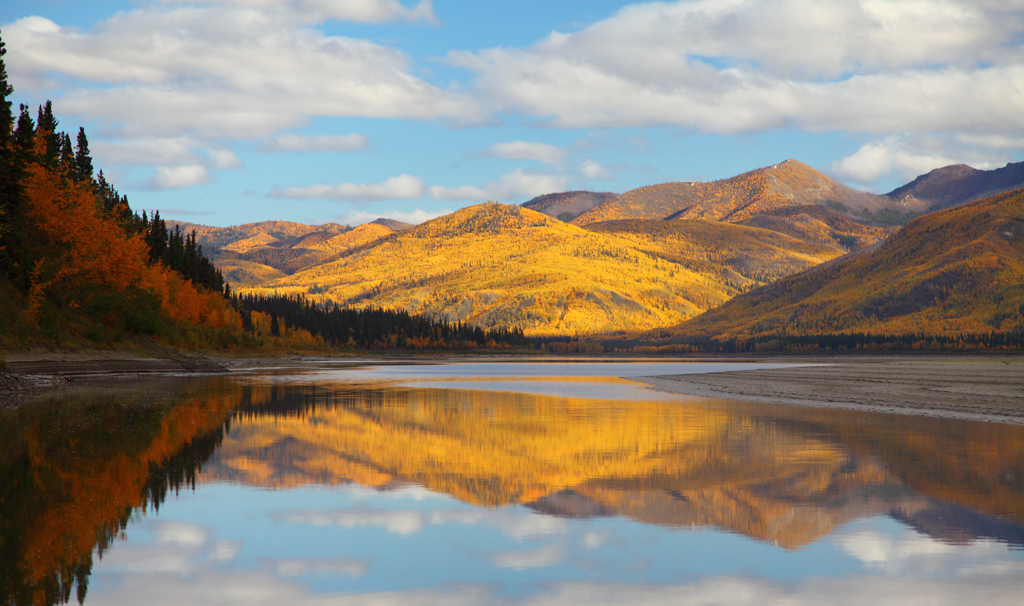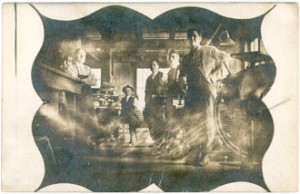Angela Sharkey was an Oak Creek Printworks featured artist in the winter of 2009/2010.

This colorful image of Roman pines was printed and used as a bookmark.
BY ANGELA SHARKEY
www.angelasharkey.com
I have been a professional artist for more than 20 years now and I have worked in both graphic design and the art industry and have found my true love in painting some 12 years ago. As an independent artist, I am constantly evolving with every changing landscape, pushing my boundaries whenever I can. My family and I move around the world quite often so I am constantly trying to find my place along the way in new and often unfamiliar cultures.
My home these days is sunny, ancient, noisy, and beautiful Rome, Italy. I visited this great city some 22 years ago as an artist living on a shoe string budget, and as many before me I was captivated by “la dolce vita.” Coming back to Italy to live has been a dream for me and I am determined to live life to the fullest. The French novelist Marcel Proust sums up my attitude in life quite well in his beautiful and poignant quote:
The real voyage of discovery consists not in seeking new landscapes but in having new eyes.”
With all the difficulties of moving so often and adjusting to a new life I find it fascinating how altering my vision or having new eyes can affect what I see and how I feel. This way of seeing, in turn, ultimately affects those around me—hopefully in a positive way. As I look around I see so many lives moving in different directions; everyone’s eyes are capturing a different view, giving us all our own unique perception.
 As an artist I like to approach my work when my vision is overloaded with colors and scenes and I need to translate everything onto the canvas. I am always looking deeper, certain there is more below the surface, hoping for more clarity. In my work as an artist and in everyday life I am very drawn to color, and my art is a great way for me to express this.
As an artist I like to approach my work when my vision is overloaded with colors and scenes and I need to translate everything onto the canvas. I am always looking deeper, certain there is more below the surface, hoping for more clarity. In my work as an artist and in everyday life I am very drawn to color, and my art is a great way for me to express this.
Whether I am in the Tuscan countryside counting the endless cypress trees that line the country roads, or studying the rolling hills dotted with Roman pines, I envision the colors I want to capture as I sketch and study nature. Gazing upon the magnificent architecture all around me I break the images down into simple forms and shapes putting color where it once was and bringing texture into the piece. Everywhere I look I am inspired by the beautiful Italian landscapes and architecture, which I then transpose to the canvas through my own vision.
 Alongside my work as an artist I am currently working as an art curator for the Mel Sembler Gallery at the US Embassy in Rome. My job allows me to show my art once a year at the gallery while the remainder of the year I scout American or international artists, along with the curating team, for those interested in showing at the gallery. Every month we show a new artist’s work which includes sculpture, painting, photography, textile art, and mixed media. I have had the privilege to meet many talented individuals and enjoy sharing in their excitement as a distinguished artist showing at the US Embassy Mel Sembler Gallery. For some artists it is their first solo show and I am honored to help them show their work in the best light possible, giving them the exposure they deserve.
Alongside my work as an artist I am currently working as an art curator for the Mel Sembler Gallery at the US Embassy in Rome. My job allows me to show my art once a year at the gallery while the remainder of the year I scout American or international artists, along with the curating team, for those interested in showing at the gallery. Every month we show a new artist’s work which includes sculpture, painting, photography, textile art, and mixed media. I have had the privilege to meet many talented individuals and enjoy sharing in their excitement as a distinguished artist showing at the US Embassy Mel Sembler Gallery. For some artists it is their first solo show and I am honored to help them show their work in the best light possible, giving them the exposure they deserve.
In the month of March we have a special show dedicated to children’s art. The children of embassy employees submit their work which is then displayed in the gallery much to the pride of the young artists and the admiration of the adults. It allows the children a sense of confidence and accomplishment that they are able to publicly display their works. I have always enjoyed children’s art as it is uninhibited and free. This March 2012 we will be happy to help celebrate the 100th anniversary of The Girl Scouts of America as the Scouts submit their artwork to our gallery for the children’s art show.
I have seen firsthand the Mel Sembler gallery is more than just a venue for showing art, but a real-world setting for joining Americans and the international community. Through our art we are bringing people together to share ideas and connect our lives and families. I believe we all have the possibility to see with new eyes, regardless of the landscapes we are navigating, and bring forth positive new visions for our world.
 Angela Sharkey
Angela Sharkey
Roma 2011





















